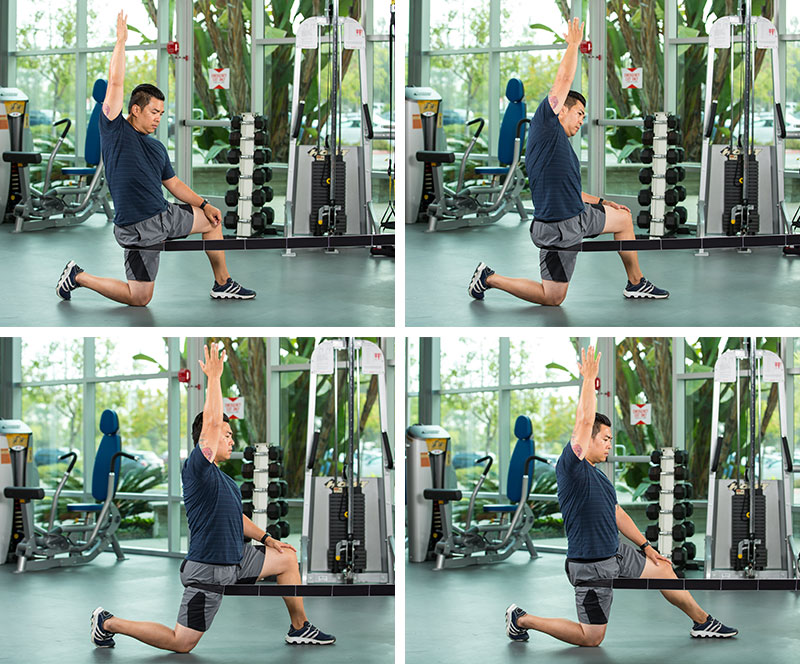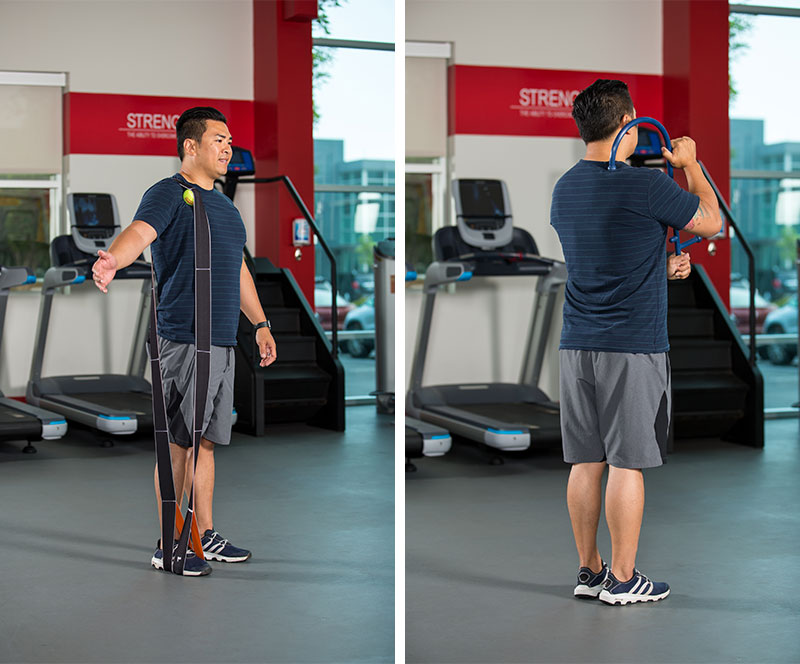There are times where it is appropriate to perform self-massage both before and after exercise. (For more details and helpful tips on self-massage techniques, check out this ACE blog.) Self-massage can be used to loosen tight tissue (similar to how chewing gum needs to be chewed to blow a bubble) and can rehydrate and “wake up” inhibited tissue.
Common Hip Problem: Glutes Don’t Work When Doing Glute Bridges
Just because we call it a glute bridge doesn’t mean it will automatically work the glutes. For many people who never feel this exercise in their glutes, it makes sense to consider why. Most often, it is tightness and/or hypertonicity in the hip flexor muscles that is neurologically inhibiting the glutes from firing. Often this is combined with more use of the lower back and hamstrings to pick up the slack for the neighboring glutes. So people lift their butts, but the butt muscles don’t do much of the work.
The Fix for “Gluteless” Glute Bridges
LENGTHEN
Tri-planar Hip Flexor Stretch With Joint Distraction
Complete 5 reps each of the following as shown in the video.
- Front-to-back Shift
- Lateral Flexion
- Hip Rotation (each direction)
STRENGTHEN
Glute Bridge
Perform 12-15 reps. The use of the Sling Shot is optional and adds a frontal plane load to the traditional sagittal plane movement of a glute bridge.
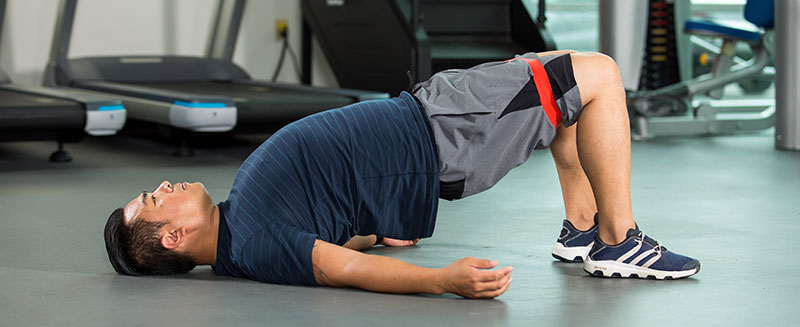
Common Shoulder Problem: Rounded Shoulders When Rowing Because Back Muscles Don’t Work
Rounded shoulders during rowing is more common in men than women simply because men are more likely to spend an inordinate amount of time training the chest muscles. However, because both men and women spend a lot of time sitting, it’s become a concern for everyone. When performing an exercise such as a seated cable row or single-arm dumbbell row, for example, you often see the arms doing all the work.
Shortened chest and/or shoulder muscles potentially combine with shortened, overactive upper-trapezius muscles to inhibit action of the lower and middle trapezius and rhomboids. This inhibits proper scapula motion when rowing and limits the action of the back muscles. The problem is illustrated in this video.
The Fix for Inactive Upper Back Muscles
SOFTEN
1. Chest (Strand and Ball)
2. Upper Trapezius (Body Back Buddy)
LENGTHEN
Suspension Trainer Shoulder Stretch
Complete 10 reps with a brief hold in open shoulder position.
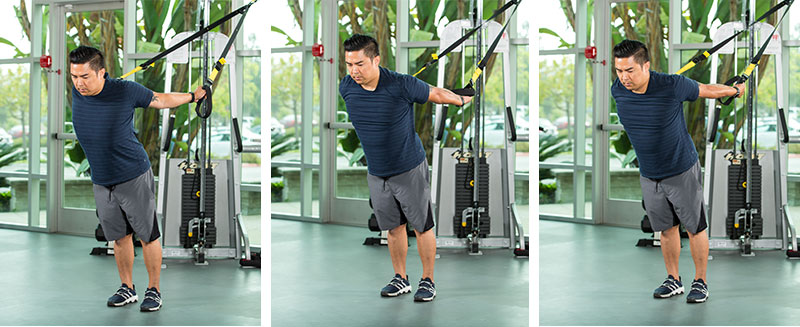
STRENGTHEN
Scapula Dips
Perform 20 dips.
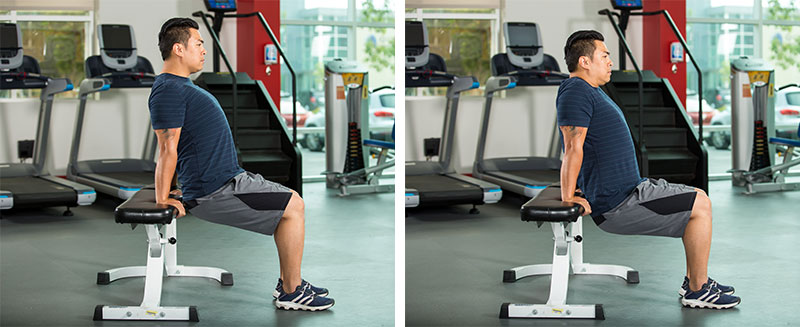
Wrap Up
The soften, lengthen, strengthen sequence provides an opportunity to rapidly improve the health and hydration of a tissue and optimize nervous system control, and gets the right muscles firing at the right time. Wherever you see a mobility problem, consider how you can use various exercises in this sequence to improve a client’s function.


